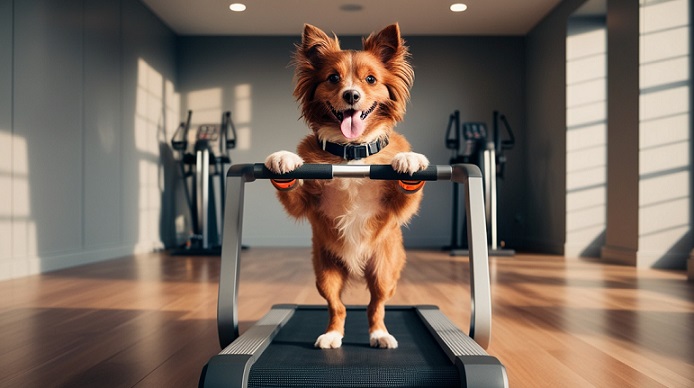Dogs Should Not Use Human Treadmills. Here’s Why

Taking your dog out for a walk just isn’t possible anymore. Now, the idea of using your treadmill probably crossed your mind – after all, it’s just sitting there, and it works great for you. Well, it’s not that simple. While it might seem convenient, there are several reasons why dogs should not use human treadmills.
I’m here to help you understand why this might not be the best idea for your pup’s safety and well-being.
Read Also: Dog training collar with remote vs without remote
Jump to Section
Can Dogs Use Treadmills?
The short answer to is yes, technically, but humam treadmills are not recommended. While a dog can physically walk or run on a human treadmill, doing so can pose several risks to your dog’s health and safety. Treadmills designed for humans are built with our biomechanics in mind, which differ significantly from those of dogs.
The way we walk and run on a treadmill, the width and length of the treadmill belt, and the speed settings are all tailored to human use. This means that even if your dog manages to stay on the treadmill, they may be putting unnecessary strain on their joints, muscles, and overall body safety and well-being.
Dog-Specific Treadmills

The best alternative to using a human treadmill is to invest in a treadmill designed specifically for dogs. These treadmills are built with your pet’s size, stride, and safety in mind. These treadmills typically have a wider and longer belt, adjustable speed settings that cater to a dog’s natural pace, and safety features like side rails and harnesses.
Why Human Treadmills Aren’t Dog-Friendly
Now that we’ve covered the basics, let’s talk about why dogs should not use human treadmills. Here are some key reasons:
1. Risk of Injury
The most significant concern with using a human treadmill for your dog is the risk of injury. Human treadmills are not designed for a dog’s natural gait, which can lead to your dog tripping, slipping, or falling off the treadmill. The lack of side barriers on human treadmills increases the risk of your dog stepping off the side, which could result in serious injuries.
2. Incorrect Speed and Incline
Human treadmills are generally too narrow and too short for dogs to comfortably use. Dogs have a different gait and stride length compared to humans, and a treadmill designed for humans may not accommodate their natural movements. This can lead to awkward positioning and even injury.
Additionally, human treadmills often have speed settings that are either too fast or too slow for dogs, making it difficult to find a pace that’s safe and comfortable for them.
3. Lack of Side Rails or Safety Features
Most human treadmills lack the necessary safety features to protect a dog while they exercise. Dogs may lose their balance, especially when starting or stopping, and the absence of side rails can lead to falls or injuries.
Unlike treadmills designed specifically for dogs, human treadmills do not have the appropriate harness systems to keep your dog safely in place during exercise.
4. Stress and Anxiety
The noise, vibration, and unfamiliarity of a human treadmill can cause significant stress and anxiety for your dog. Dogs are often sensitive to new experiences, and the mechanical sounds of a treadmill can be overwhelming. This stress can lead to negative associations with exercise, making it harder to keep your dog active in the future.
5. Joint and Muscle Strain
The surface of a human treadmill is not designed to absorb the impact of a dog’s stride. This can result in undue stress on your dog’s joints and muscles, especially for breeds that are prone to joint issues or older dogs. Over time, using a human treadmill could exacerbate existing health problems or lead to joint problems, or injuries.
6. Temperature and Overheating
Human treadmills can generate a significant amount of heat, especially during prolonged use. Dogs are more sensitive to temperature changes, and running on a hot treadmill belt could lead to paw burns or overheating. Unlike humans, dogs do not sweat through their skin and can easily overheat if they are not monitored closely.
7. Inadequate Supervision
When you use a human treadmill for your dog, it’s easy to think you can multitask – perhaps catching up on work or watching TV while your dog exercises. However, using a treadmill requires your full attention to ensure your dog’s safety. Without proper supervision, your dog is at a higher risk of injury.
Conclusion
Always stick to the right equipment. Dogs should not use human treadmills due to the significant differences in design, safety features, and the potential for injury. Instead, consider investing in a treadmill designed specifically for dogs or explore other indoor exercise options that are safe and enjoyable for your furry friend.
Remember, keeping your dog healthy and happy requires the right tools and a lot of love.
Read related posts about





